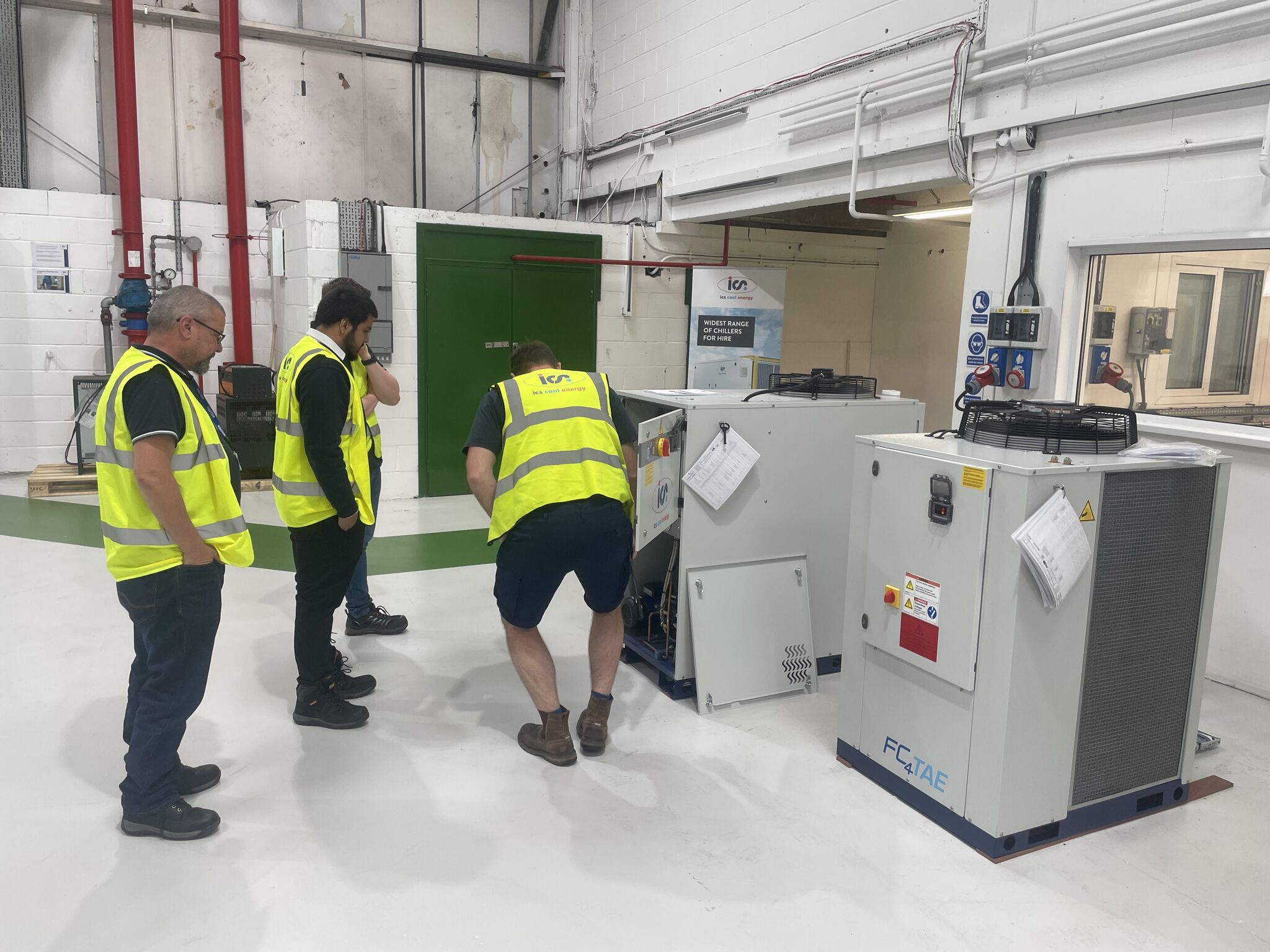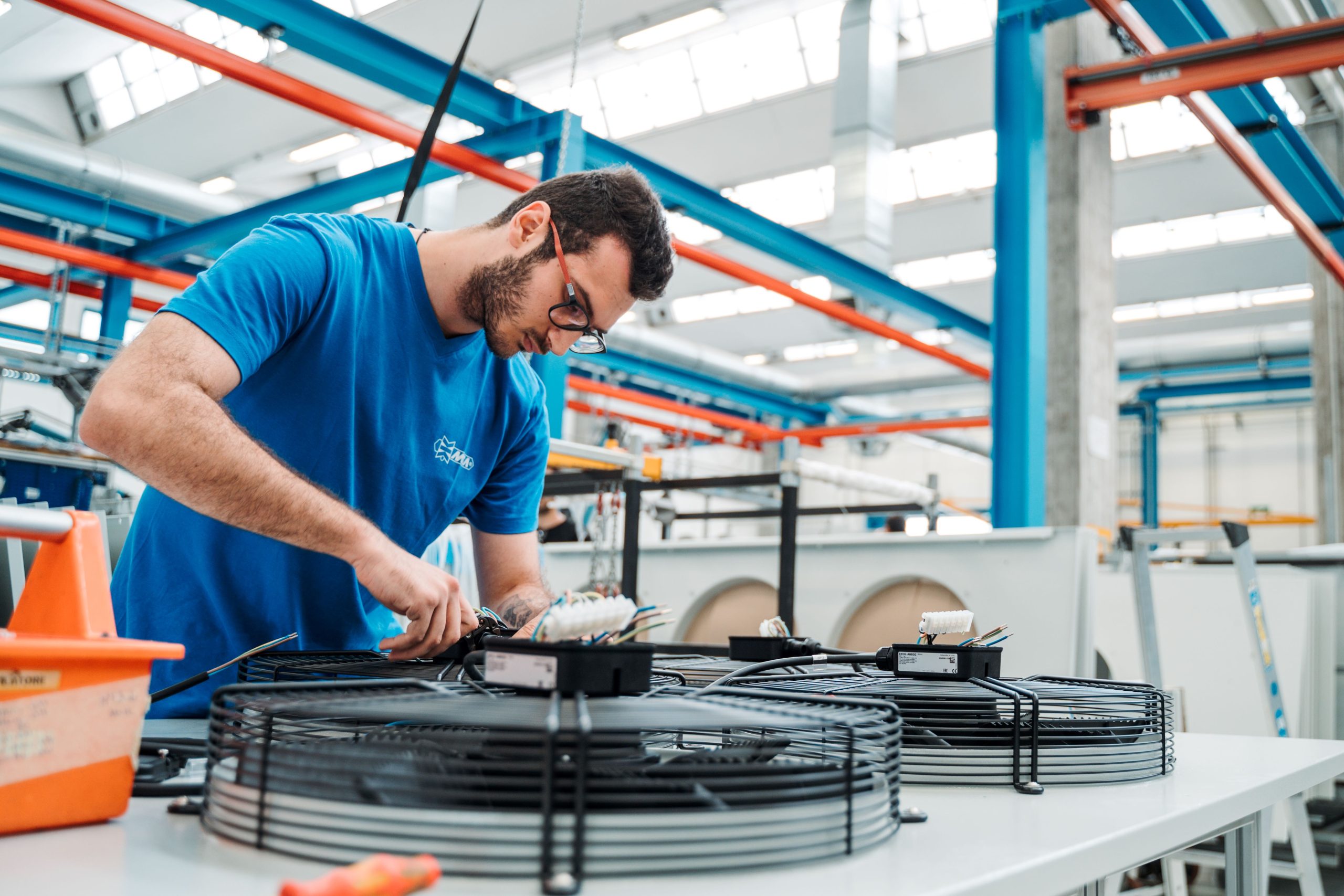Tight budgets, compressed timelines, and rising expectations: how OEMs can help ensure reliability and performance of their solutions through smarter cooling partnerships.
By Ian Morgan, Sales Manager OEM and Trade, ICS Cool Energy
Original equipment manufacturers (OEMs) are under constant pressure to deliver machines that are not only technically robust but also innovative, reliable, and cost-effective. A match made in heaven, as they say. Whether designing MRI scanners, food production machinery, or advanced industrial systems, design managers must balance tight budgets, compressed timelines, and the scrutiny of senior stakeholders.
In this environment, every supplier decision matters. Cooling and temperature control is essential for the equipment to function as designed by the OEM. Temperature control and stability directly impacts cycle times and output in manufacturing and is critical to keep vital equipment such as MRI scanners running. Choosing the right process cooling partner can mean the difference between a system that performs flawlessly for years and one that creates costly downtime or reputational risk.
Performance claims backed by third party evidence
One of the things to pay attention to is independent accreditation of the cooling systems. When cooling equipment is tested against recognised international standards, it is not just about ticking a box. It means performance claims are backed by third party evidence. For OEMs, this should matter. It will help them stand behind their choices with confidence, especially when presenting to internal stakeholders or hospital clients.
Warranty cover adds another layer of certainty. It is not only about protection but also about trust in long term reliability. When these elements come together with early technical input and clear documentation, integration tends to go more smoothly. In medical imaging, where precision and uptime are critical, that kind of support can make a real difference.
Pairing equipment with the correct supportive systems reduces uncertainty.
Working directly with the manufacturer of the cooling systems can make a real difference during the design phase, and this is applicable to a lot of OEM industries and businesses. It allows for early conversations with engineers, access to technical expertise and documentation that fits smoothly into digital workflows. For OEMs, this kind of support helps reduce uncertainty and keeps projects moving with the assurance that the equipment will be paired with the correct supportive systems.
When standard models are not quite right, there are ways to adapt. Factory modifications, testing and collaborative planning can help shape a cooling solution that suits the application, which makes integration easier and can shorten the time to market or installation at end-customers. This is not possible with off-the-shelf systems from third party distributors.
Across a wide temperature range, from minus seventy to plus three hundred and fifty degrees Celsius, precision cooling is possible even in demanding environments. When energy efficiency and performance are built into the design, OEMs can focus on what matters most, and that is creating equipment that works reliably and meets client expectations.

Support should not stop at delivery.
In cooling projects, clarity, consistency and long term reliability matter. Having equipment and parts available when needed can ease that pressure and help design teams stay on track without cutting corners. Support should not stop at delivery. When technical help continues, parts are easy to source and the working relationship is steady, it becomes easier to focus on the design itself. That kind of support helps reduce stress and protects the reputation of the final product.
Process chillers are often quietly essential in medical imaging. When temperature stability is compromised, equipment like MRI scanners can lose accuracy or even stop working altogether. For OEMs designing imaging systems, things like independent accreditation, warranty cover and early access to technical data can make integration smoother and give hospital clients more confidence. When cooling partners offer clear documentation and are available to work closely with design teams from the start, it becomes easier to meet performance standards and avoid last-minute surprises. In healthcare, where every detail matters, that kind of support can make a real difference.
Generic or third-party chillers may appear cost-effective at first glance, but they introduce weak links into your design. Lack of accreditation, limited technical support and uncertain lead times can undermine both performance and trust.
This is where direct relationships with temperature equipment manufacturers make a difference. Unlike many suppliers who act as distributors, leading chiller manufacturers have full accountability from design through after-sales support. Eurovent accreditation, factory modifications, and Factory Acceptance Tests should not be treated as add-ons but as essential part of the product offering.
Trends Shaping OEM Design
- Digital-first collaboration: OEM teams increasingly demand technical data in digital formats, accessible across borders and languages.
- Independent assurance: accreditation and warranty are becoming non-negotiable for buyers.
- Customisation at scale: off-the-shelf is rarely enough; OEMs expect tailored solutions.
- Sustainability and efficiency: energy-efficient cooling is now a design priority, not an afterthought.
For OEM design managers, the real challenge is not abstract trends but the daily responsibility of making sure machines perform as promised. Cooling is rarely the headline feature of a system, yet it often determines whether that system will stand the test of time.
Our role as temperature control systems manufacturer is not to impress, but to assist, making the OEM design journey easier and ensuring the final result is something everyone can stand behind with confidence.
By investing in accredited, collaborative cooling partnerships, OEMs can safeguard both their equipment and their reputation, ensuring end-users experience the reliability and performance they expect. In today’s fast-paced manufacturing landscape, these choices are not just technical, they are strategic. When design managers prioritise standards, collaboration, and ongoing support, their solutions stand out for all the right reasons, ready to meet the shifting demands of the market and the future.






